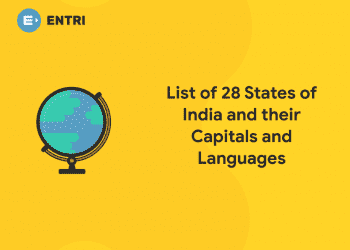Table of Contents
The International Day of Islamic Art is celebrated every year on November 18 to honor the beauty, diversity, and cultural significance of Islamic art. Proclaimed by UNESCO in 2019, this day recognizes the creative achievements of Islamic civilizations across centuries. From stunning architecture to intricate calligraphy and geometric designs, Islamic art represents harmony, spirituality, and intellectual depth. The day highlights how art has served as a universal language connecting people beyond borders, beliefs, and traditions. It also encourages appreciation for the artistic innovations that have shaped global cultural heritage.
This observance not only celebrates the aesthetic aspects of Islamic art but also its deeper philosophical and spiritual meanings. Through exhibitions, discussions, and educational programs, the day promotes intercultural dialogue and respect for diversity. Islamic art is viewed as a symbol of unity, reflecting values of balance, order, and divine beauty. By dedicating a day to its celebration, UNESCO aims to inspire understanding between cultures and generations. Ultimately, the International Day of Islamic Art serves as a global reminder of art’s power to unite humanity through shared creativity.
International Day of Islamic Art 2025 Date – November 18
In this article readers can get a glimpse on
- History and Objective of International Day of Islamic Art
- International Day of Islamic Art Activities 2025
- International Day of Islamic Art Quiz
History and Objective of International Day of Islamic Art
1: Who was the first woman President of India?
The International Day of Islamic Art was officially proclaimed by UNESCO on November 18, 2019, during its 40th General Conference in Paris. The idea was introduced by the Kingdom of Saudi Arabia to highlight the importance of Islamic art as a bridge between cultures. Since then, the day has been observed annually across the world, promoting appreciation for the creativity, craftsmanship, and diversity of Islamic artistic traditions. It celebrates centuries of contributions made by Muslim artists, architects, and scholars to global art and culture. This initiative also reflects UNESCO’s mission to foster cultural understanding and preserve artistic heritage.
The main objective of celebrating this day is to raise awareness about the significance of Islamic art in promoting dialogue, peace, and cultural exchange. It aims to encourage respect for artistic diversity and highlight the universal values represented in Islamic designs and patterns. The day inspires young artists to learn from traditional techniques while embracing modern interpretations. It also emphasizes the need to protect and preserve historical artworks and monuments for future generations. Through global observance, the day strengthens connections between art, faith, and humanity.
Free UPSKILLING Courses!
Take your first step toward mastering in-demand skills, acing interviews, and securing top-tier jobs with Entri's free upskilling courses.
Start Learning!International Day of Islamic Art Activities 2025
The International Day of Islamic Art is celebrated annually on November 18th, having been officially proclaimed by UNESCO in 2019 to raise awareness of the past and contemporary artistic expressions of Islam and their profound contribution to global civilization and intercultural dialogue.
The celebration in 2025 will continue to showcase the incredible diversity of Islamic arts, which span fourteen centuries and countless geographic regions, encompassing everything from monumental architecture and intricate calligraphy to music, ceramics, and textiles.
Suggested Activities & Ways to Participate
While the day does not typically have a single global theme, the focus remains on promoting cultural appreciation and dialogue through art. Below are various ways individuals, institutions, and communities can engage:
- Visit a Museum or Exhibition:
- Seek out major museum collections, such as the Museum of Islamic Art (MIA) in Qatar or the Islamic Arts Museum Malaysia (IAMM), which often host special workshops, talks, and display highlights on or around November 18th.
- Look for local exhibitions that might be running, such as the large-scale Islamic Arts Biennale 2025 (running in Jeddah from January to May, with the theme “And All That Is In Between”) which showcases historical artifacts alongside contemporary art.
- Engage in Artistic Workshops:
- Participate in Arabic Calligraphy classes focusing on traditional scripts (like Kufic or Thuluth).
- Take a course on Islamic Geometric Patterns, learning the mathematical principles behind their beautiful symmetry.
- Try hands-on crafts like Ebru (Turkish paper marbling), miniature painting, or Islamic ornamentation in woodcarving.
- Online Learning and Dialogue:
- Join virtual talks, live demonstrations, or online festivals, such as the yearly Islamic Art Week (often held around the day) to access sessions on history, technique, and contemporary practice from global artists.
- Watch educational videos from institutions like UNESCO or museum channels that explain the influence of Islamic art on other artistic movements worldwide.
- Community and Educational Outreach:
- If you are an educator, organize a classroom activity for students focused on drawing or coloring patterns inspired by Islamic art to explore concepts like symmetry and balance.
- Share high-quality images of your favorite pieces of Islamic architecture, calligraphy, or craft on social media using relevant hashtags to contribute to the global digital celebration.
- Host a book club or discussion group focused on the history or influence of Islamic art on a particular region or time period.
International Day of Islamic Art Quiz 2025
A) UNESCO
B) UNICEF
C) WHO
3. In which year was the International Day of Islamic Art first proclaimed?
A) 2018
B) 2019
C) 2020
A) British Museum
B) Museum of Islamic Art, Doha
C) Louvre Museum
5. Which of the following is a famous example of Islamic architecture?
A) Parthenon
B) Blue Mosque
C) Eiffel Tower
A) Geometric and floral designs
B) Portraits of rulers
C) Landscapes and scenery
A) Arabic
B) Persian
C) Urdu
A) Ottoman
B) Mughal
C) Safavid
A) Avoiding depiction of living beings
B) Using only dark colors
C) Promoting realism
Want More Engaging Questions?
Download our FREE PDF packed with insightful quiz questions to test your knowledge!
🔽 Click below to get your free copy now! 🔽
International Day of Islamic Art Quiz 2025 PDF
The International Day of Islamic Art serves as a reminder of the timeless beauty and cultural depth that Islamic art brings to the world. Through its intricate calligraphy, geometric patterns, and architectural marvels, it reflects harmony, spirituality, and creativity. The observance encourages people to explore the shared heritage that unites different cultures under the values of peace and understanding. It also inspires future generations to preserve and innovate within these artistic traditions.
By celebrating this day, individuals and institutions worldwide contribute to promoting dialogue through art and culture. The exhibitions, discussions, and educational events held each year highlight the universal language of artistic expression. Islamic art not only connects people across faiths and borders but also emphasizes the enduring power of beauty as a form of unity. This celebration continues to nurture respect, inspiration, and global cultural awareness.
Free UPSKILLING Courses!
Take your first step toward mastering in-demand skills, acing interviews, and securing top-tier jobs with Entri's free upskilling courses.
Start Learning!Frequently Asked Questions
What is the International Day of Islamic Art?
The International Day of Islamic Art is celebrated every year on November 18. It was proclaimed by UNESCO to promote a deeper understanding of Islamic art and its contribution to world culture. The day encourages appreciation for creativity, heritage, and diversity within Islamic artistic traditions. It highlights the cultural dialogue Islamic art fosters between nations and communities. The celebration also inspires the preservation of traditional art forms across generations.
Why was the International Day of Islamic Art established?
UNESCO established the day to raise awareness about the importance of Islamic art in global culture. It aims to showcase the influence of Islamic creativity on architecture, calligraphy, and design. The celebration also seeks to promote cultural diversity and mutual understanding among societies. Islamic art is seen as a universal language that connects people through beauty and meaning. This initiative helps counter stereotypes and encourages intercultural respect.
When was the International Day of Islamic Art first celebrated?
The day was officially proclaimed in 2019 during UNESCO’s 40th General Conference in Paris. Since then, November 18 has been observed annually across member states. Many countries host exhibitions, seminars, and workshops to celebrate the occasion. The day also brings together scholars, artists, and students to explore the depth of Islamic aesthetics. Its first celebration marked a global effort to honor centuries of Islamic artistic heritage.
What is the main objective of celebrating this day?
The goal is to promote the appreciation of Islamic art as a symbol of unity and creativity. It encourages education about its influence across different cultures and periods. The day helps preserve traditional craftsmanship and promote modern interpretations rooted in Islamic principles. It also supports dialogue among artists, historians, and cultural institutions. Overall, it strengthens global awareness of art’s role in fostering peace and harmony.
What are the main forms of Islamic art?
Islamic art encompasses various forms such as calligraphy, geometric patterns, arabesque designs, and architecture. Calligraphy is often used to express religious devotion through verses of the Quran. Architecture includes famous monuments like the Alhambra, Blue Mosque, and Taj Mahal. Islamic textiles, ceramics, and manuscripts also represent its wide artistic range. Together, they reflect harmony, balance, and spirituality in artistic expression.
Why does Islamic art avoid depicting living beings?
In Islamic tradition, depicting living beings is often avoided to prevent idolatry. Artists instead express creativity through abstract, floral, and geometric patterns. This focus allows the art to represent divine beauty beyond human or animal forms. The intricate designs symbolize the infinite nature of creation and unity in diversity. It also reflects the belief that true beauty lies in symmetry and spiritual depth.
How is calligraphy important in Islamic art?
Calligraphy holds a sacred place in Islamic art due to its connection with the Quran. It transforms written words into a visual form of devotion and reverence. Artists use Arabic script to decorate walls, manuscripts, and architecture. The use of gold and intricate strokes enhances both beauty and meaning. Calligraphy thus serves as both an artistic and spiritual expression of faith.
Which countries are known for their contributions to Islamic art?
Countries like Iran, Turkey, Egypt, India, and Spain have made remarkable contributions. Each region developed its own style influenced by local traditions and materials. For example, Persian art is known for miniature painting, while Ottoman art excels in tile work. Mughal India combined Islamic and local motifs to create iconic structures like the Taj Mahal. These diverse contributions together form the rich mosaic of Islamic art heritage.
How do museums and cultural institutions celebrate this day?
Museums often organize exhibitions showcasing Islamic artifacts, manuscripts, and architectural models. Educational workshops are held to teach calligraphy, geometric design, and pattern making. Cultural institutions host discussions highlighting Islamic art’s role in bridging civilizations. Many universities also arrange lectures to explore its philosophical and spiritual foundations. These activities help promote global appreciation of Islamic creativity and craftsmanship.
How can individuals participate in the International Day of Islamic Art?
Individuals can celebrate by visiting art museums, attending cultural programs, or exploring online exhibitions. Learning about Islamic calligraphy, patterns, and architecture helps deepen understanding. Students and artists can participate in workshops or create art inspired by Islamic traditions. Sharing information on social media also raises awareness about its beauty and values. By engaging in these activities, individuals help preserve and promote Islamic art worldwide.












